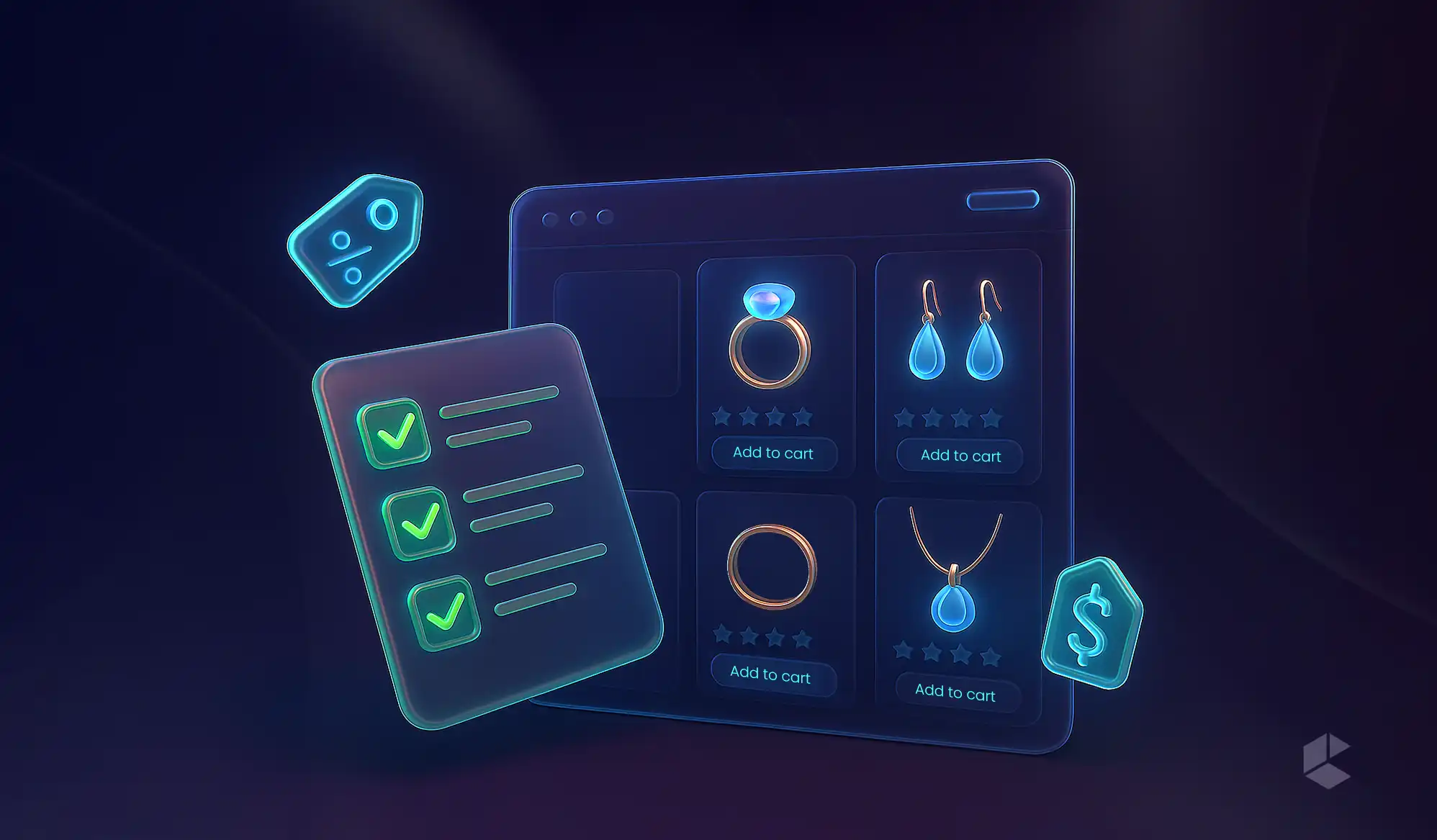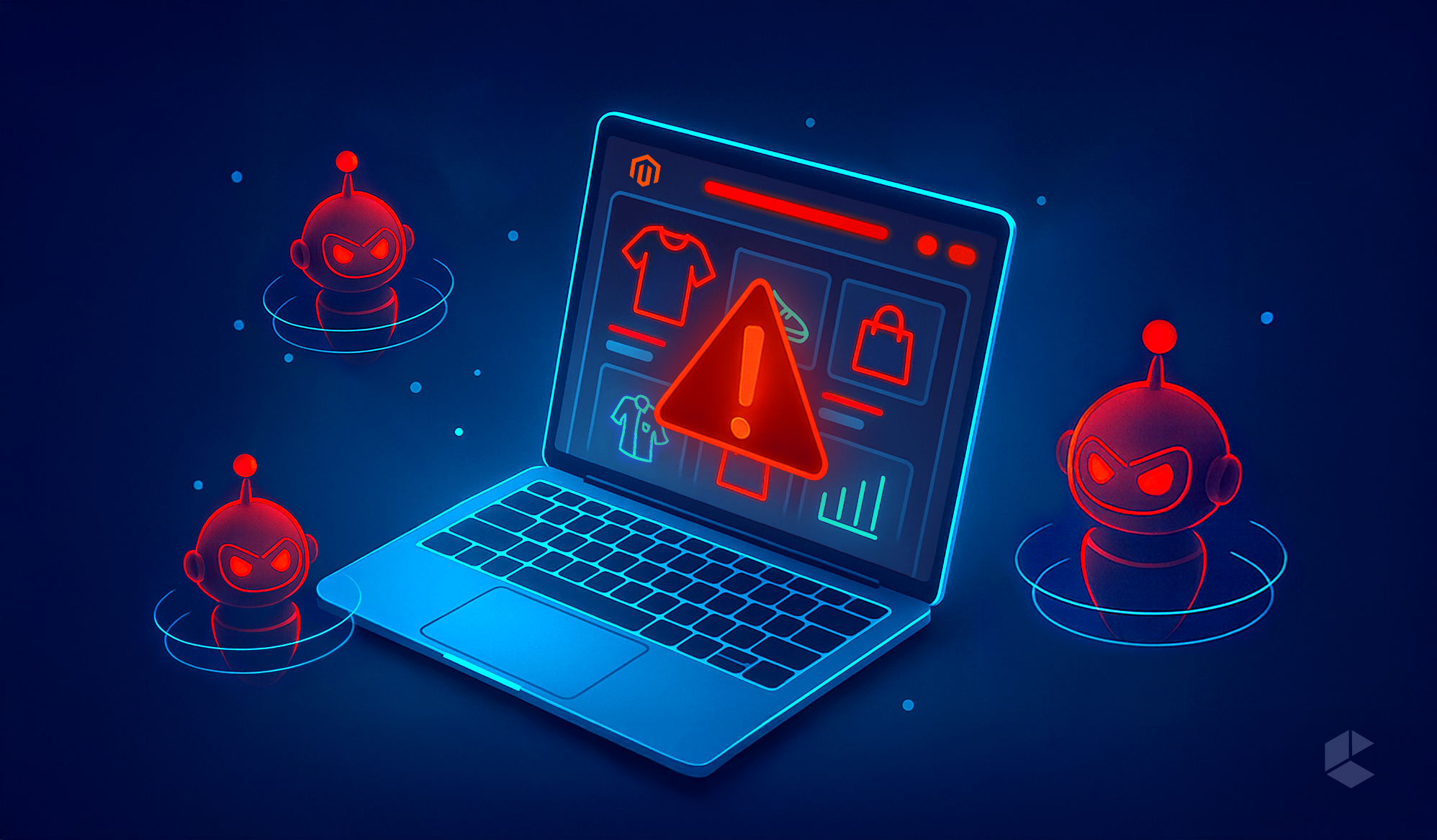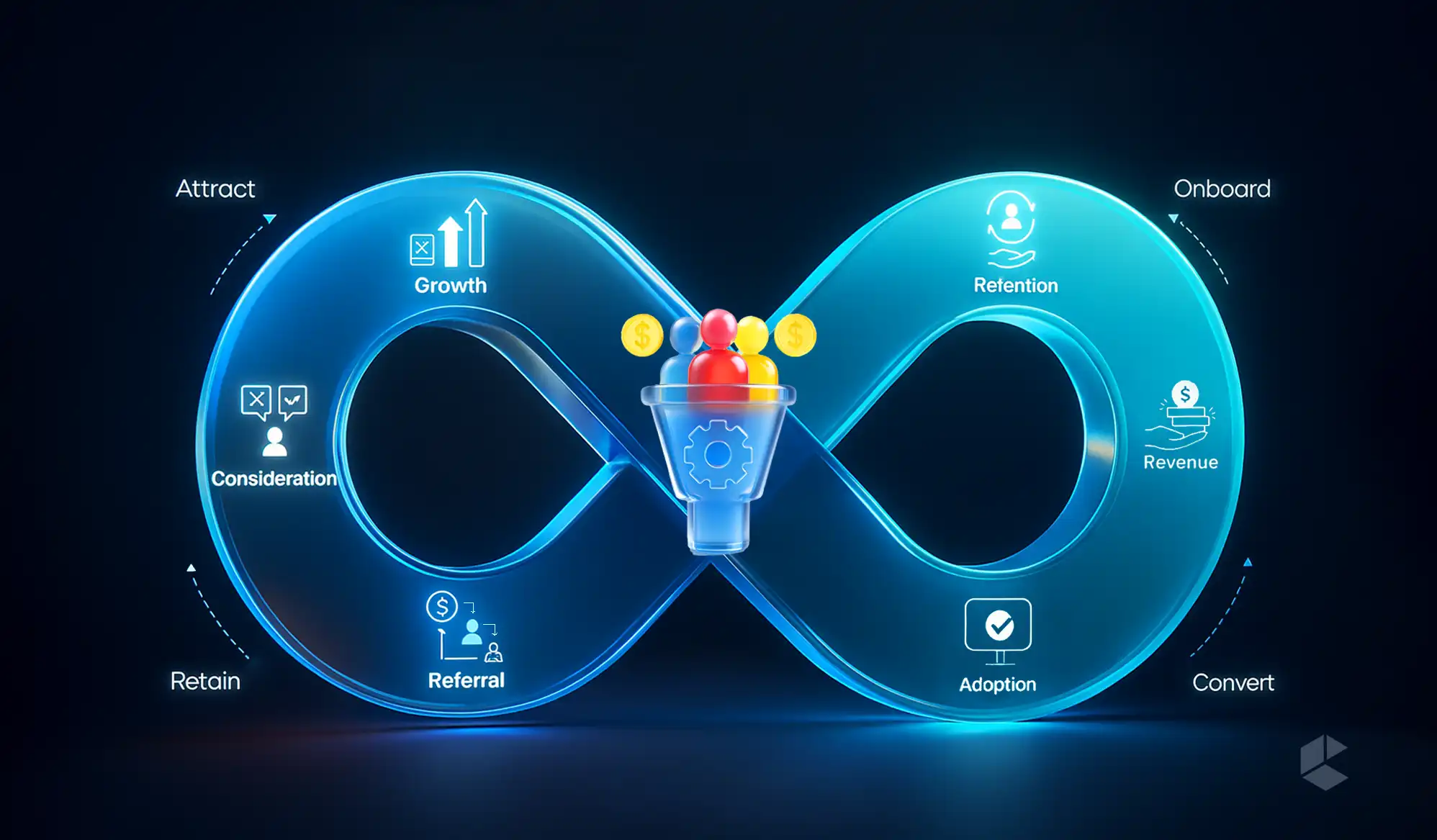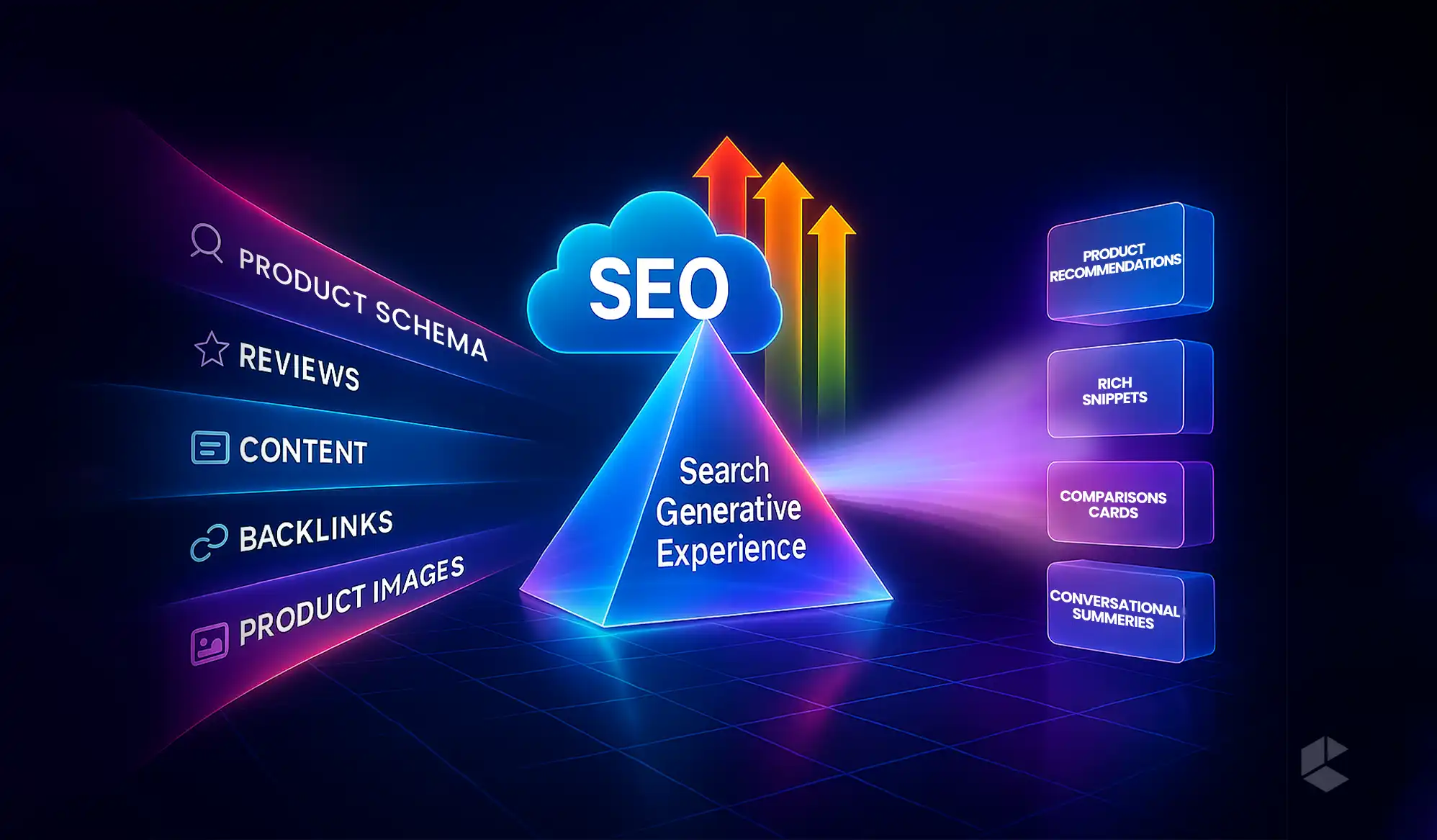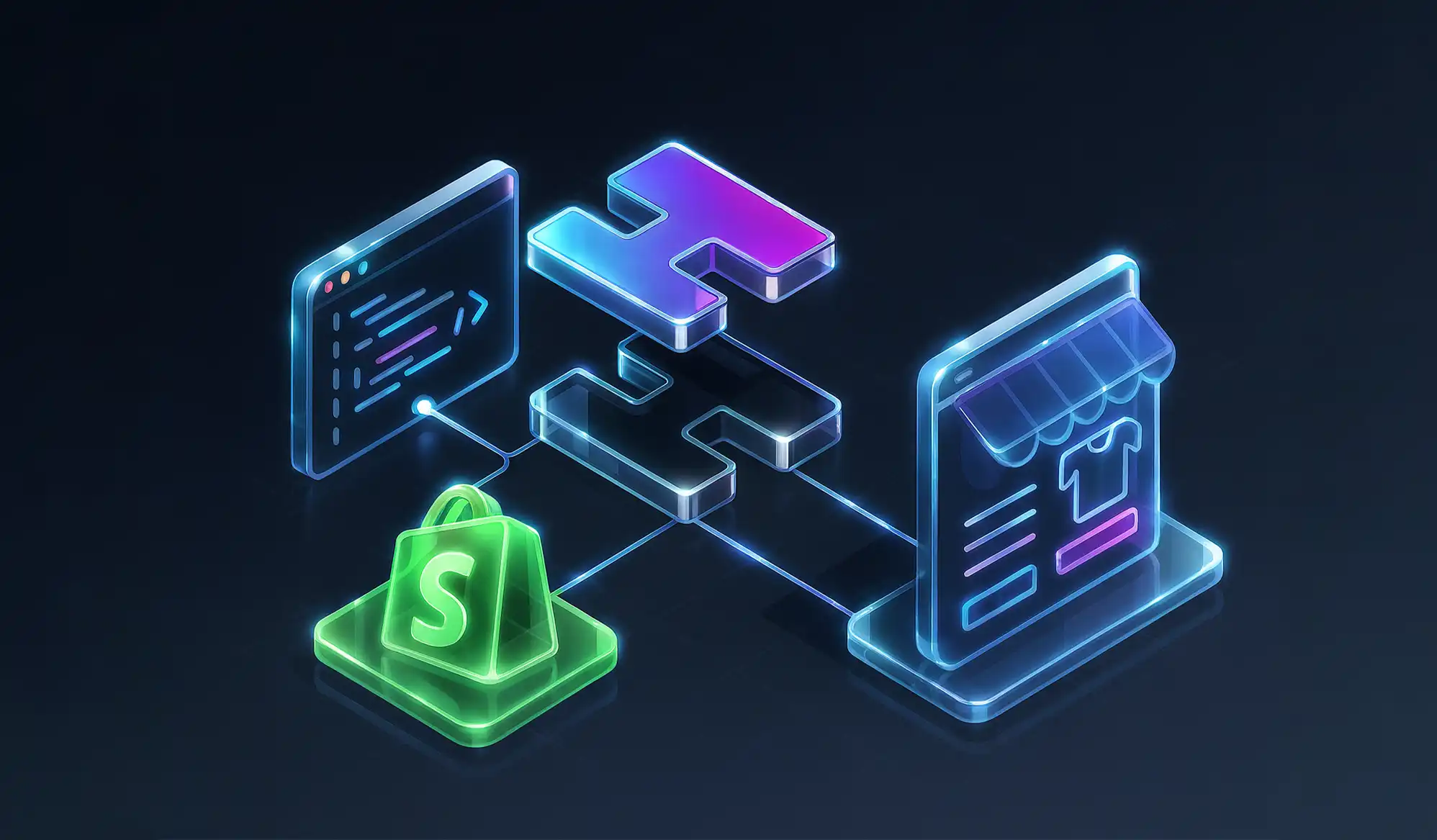- Jewelry eCommerce requires dynamic pricing engines for real-time gold rate updates.
- Centralized product tables prevent SKU overload and ensure catalog efficiency.
- Discounts in jewelry apply at component levels, not overall product price.
- Hybrid inventory systems manage both ready-stock and made-to-order products effectively.
- Custom product logic enables smooth handling of purity, size, and diamond variations.
- Transparent cost breakdowns build customer trust and improve online conversion rates.
Selling jewelry online looks glamorous on the surface, but the mechanics behind it are far from simple. Unlike apparel or electronics, where pricing and catalog management follow predictable patterns, jewelry demands an entirely different playbook. From real-time gold rate fluctuations to complex product variations, every element of jewelry eCommerce requires precision, flexibility, and intelligent system design.
In this complete guide, we will explore what makes jewelry eCommerce so complex, how traditional platforms fall short, and what specialized approaches developers must take to build scalable, accurate, and user-friendly online jewelry stores.
Why Jewelry Ecommerce is a Different Ball Game

For years, eCommerce developers have followed a standard formula: define SKUs, set static prices, and apply discounts across catalog segments. This model works fine for most industries, but it collapses quickly when applied to jewelry.
In jewelry, the price of gold and diamonds changes daily, and that single factor alone reshapes every product’s value in real time. Add customization layers like purity, color, and size, and you have an industry where a single ring can yield hundreds of combinations, each with its own pricing and inventory logic.
When working with brands like Candere by Kalyan Jewellers, Joyalukkas, and Malabar Gold & Diamonds, one lesson consistently stands out: building a jewelry eCommerce system is not about extending existing templates; it is about redesigning the fundamentals.
Dynamic Pricing
A typical eCommerce formula for pricing might look like this:
Cost + Margin = MRP → Apply Discount → Final Price
But this logic breaks instantly for jewelry.
Here, the pricing process begins with gold weight multiplied by the current market rate. Then making charges are added; these vary by design, sometimes as a percentage of weight and other times as fixed costs. Finally, a 3% GST is applied.
At first glance, that might seem manageable. In reality, it is anything but.
Every shift in gold rate or diamond price means recalculating thousands of SKUs simultaneously. That is why jewelry eCommerce development demands a dynamic pricing engine, one that constantly recalibrates item values across purity levels, metal types, and configurations. In short, your platform must behave more like a live calculator than a static store.
Endless Configurations
One of the main reasons jewelry eCommerce cannot be treated like regular product sales is its sheer configurability. Each product is not a single item but a flexible design system built around these core attributes:
- Gold Purity: Options like 14K, 18K, or 22K directly affect both price and perceived value.
- Gold Color: Rose, white, and yellow gold each represent different finishes and preferences, creating separate SKUs for the same design.
- Size: Rings, bracelets, and chains come in numerous sizes. Even a 0.5-gram difference changes cost and weight calculations.
- Diamonds: Carat, clarity, and color each multiply the variations exponentially.
A single woman’s wedding ring can easily generate over 500 variants, each unique in pricing, inventory, and fulfillment requirements. Trying to manage this with a typical SKU-based catalog can quickly cause platform overload, data duplication, and sluggish performance.
To prevent this, experienced eCommerce developers use custom product models that centralize data by storing metal rates, stone prices, and formula-based logic in unified tables. This reduces SKU explosion while keeping calculations accurate in real time.
Discount Logic
Unlike most online categories, jewelry discounts are component-specific, not product-wide. You cannot simply run a “20% off” banner for the whole product because jewelry has multiple pricing layers. A discount might apply to:
- ₹100 off per gram of gold.
- 50% off making charges.
- 25% off diamond or stone cost.
This granular discount structure demands an advanced discount engine that can apply calculations at the ingredient level. Generic eCommerce systems typically fail here because they assume flat discount models. To make jewelry sales both attractive and compliant with real-world pricing, developers must design rules that act intelligently across metal, stone, and craftsmanship components, rather than only on the final tag price.
Balancing Fixed and Dynamic Product Types
Jewelry stores rarely deal only in gold and diamonds. Many also sell silver products such as lamps, anklets, or idols, which often carry fixed prices that are unaffected by daily rates. That means a jewelry eCommerce platform must handle two pricing logics simultaneously: dynamic logic for gold and diamond items that depend on daily rates, and static logic for silver or non-precious items that remain constant.
Platforms like Magento or Shopify are not built to toggle these logics natively, so jewelry developers need to customize product types to manage both fixed and variable products under the same catalog architecture. The challenge is ensuring customers see consistent and accurate pricing without overloading the backend.
Managing Inventory vs. Made-to-Order (MTO)
Another defining feature of jewelry eCommerce is the inventory model. Out of hundreds of possible variations for a ring or pendant, only a few may exist as ready stock. The rest are Made-to-Order, requiring specific lead times. This hybrid inventory model makes clear communication with buyers absolutely critical. Customers must know which items are immediately available and which will require manufacturing time before shipping.
Hence, the eCommerce system must: distinguish between in-stock and MTO items dynamically, display accurate delivery timelines per variation, and sync real-time updates with the backend order management system, or OMS. Failing to do this can erode buyer trust quickly, especially in a high-value segment such as jewelry.
Size-Based Pricing
In jewelry eCommerce, even the smallest change in size can trigger a noticeable change in price. For instance, a gold ring available in twelve to eighteen sizes will vary in weight with each step. An increase of just 0.5 grams can alter the gold component cost significantly. Developers must design dynamic pricing formulas that automatically adjust the price based on size and weight increments.
Each product type, such as rings, bangles, or chains, can have its own formula logic. For example, a ring’s price may increase per size step based on average gold gain, while a chain’s price may depend on per-centimeter increments. Embedding these formulas in the product architecture ensures accurate real-time pricing without generating hundreds of redundant SKUs.
SKU Logic at Scale
Consider one ring design with three gold colors, two metal qualities, five diamond grades, and sixteen sizes; that alone produces 480 possible SKUs. If every variation were created as an independent SKU in a standard database, the catalog would collapse under its own weight, causing slow searches, bloated indexing, and unmanageable data.
The smarter approach is centralized logic. Instead of storing every variation separately, developers create a custom product type that refers to shared metal and stone price tables. This keeps the catalog lean and accurate: prices remain dynamic through central rate updates, new combinations can be generated without inflating the SKU count, and inventory mapping and search indexing stay fast and efficient. Essentially, the website appears to have thousands of SKUs while technically managing only a few structured master records.
Building for Shopping Feeds and Marketplaces
While the brand’s own site can use master SKUs to simplify management, the story changes when jewelry products are listed on external platforms such as Google Shopping, Facebook, or Amazon. These third-party platforms require independent SKUs for each variation; every color, purity, and size combination must exist as a unique entity.
The solution is dynamic SKU generation: a configurator automatically creates unique SKUs for external feeds and marketplaces. These SKUs are not stored permanently in the main Magento or equivalent database. When an order is placed externally, the system decodes the SKU, identifies the correct configuration, and pushes accurate data to the OMS for processing. This keeps the brand’s internal catalog light while still fulfilling marketplace requirements.
Integrating Dynamic Pricing Engines
At the foundation of every high-performing jewelry eCommerce platform lies a dynamic pricing engine. This component must continuously pull live gold and diamond rates, apply product-specific formulas, integrate with discount logic and tax calculations, and instantly reflect price updates across the entire catalog. For developers, designing an architecture that supports real-time recalculation without delay is essential. When this system works correctly, customers see the most accurate market-linked price, even if the gold rate changes within minutes.
Handling Hybrid Inventory Systems
As discussed earlier, jewelry eCommerce often runs on a mixed inventory model that is a combination of ready-stock and Made-to-Order items. To make this work technically, developers should implement dual inventory flags within the product schema, provide lead time visibility on product pages for MTO items, and create automatic order routing that directs ready-stock items to warehouse fulfillment while routing MTO products into production workflows.
The system should also dynamically update shipping estimates based on the customer’s chosen variation, which builds transparency and prevents customer dissatisfaction due to unexpected delays.
Optimizing for Search and Indexing Efficiency
When a single design can represent hundreds of variations, traditional catalog indexing can become a performance bottleneck because each unnecessary SKU increases the load on database queries and search indexing. To prevent this, jewelry eCommerce development should consolidate variants under one searchable master product, use configurable attributes to display combinations dynamically on the frontend, and separate variant logic from search logic so customers can browse by design rather than by every possible combination. This approach ensures the platform remains fast, responsive, and user-friendly even with tens of thousands of products.
The Hidden Complexity of Discounts and Promotions
Promotional campaigns in jewelry eCommerce demand extreme precision. While fashion retailers can offer flat percentages, jewelers must respect the integrity of dynamic pricing. For instance, during a festive sale, you might offer ₹200 off per gram of gold or 50% off making charges instead of 20% off the overall product. This structure ensures transparency and compliance while keeping the discount relevant to each pricing component.
To execute this, developers need a modular discount engine capable of interacting with the pricing formula at a granular level. Discounts must recalculate dynamically as gold rates change to avoid discrepancies between displayed and final prices.
Why Standard Platforms Struggle
Platforms like Shopify, WooCommerce, or even out-of-the-box Magento installations are not designed for the depth of jewelry logic. Their SKU and pricing structures assume stable, flat-rate pricing and static inventories. In jewelry eCommerce, however, prices fluctuate daily, a single product can generate hundreds of variants, discounts apply to components rather than totals, and inventory varies between ready stock and MTO.
As a result, developers must rethink the architecture from catalog structure to pricing tables and often create custom product types, pricing APIs, and inventory modules. This approach effectively transforms the eCommerce platform into a specialized jewelry operating system that is purpose-built for this vertical.
Building Trust and Transparency with Buyers
All the technical work behind jewelry eCommerce has one ultimate purpose: earning customer trust. Jewelry is a high-value, emotionally driven purchase, and buyers expect transparency about weight, purity, and pricing. They must see clear breakdowns of gold cost, making charges, stone cost, and taxes before making a purchase decision.
Hence, successful jewelry websites always display live gold rates and itemized cost components, provide easy comparison between purities and finishes, and clearly label whether an item is ready to ship or made to order. This clarity improves conversion and reinforces brand credibility in an industry where trust matters.
What Lies in the Future of Jewelry Ecommerce?
Building an eCommerce website for jewelry is not just another web project; it is a blend of financial precision, product science, and user experience engineering. Every component, from the pricing formula to SKU logic and inventory mapping, must be custom-tailored because generic platforms cannot handle the daily realities of jewelry commerce.
Brands that have successfully navigated these complexities, such as Candere, Joyalukkas, and Malabar Gold & Diamonds, have done so by rethinking eCommerce architecture from the ground up. The result is more than a website; it is a live, intelligent platform that adapts in real time to market rates, customer preferences, and operational demands.
Conclusion
Jewelry eCommerce development tests every rule of traditional eCommerce. Pricing is dynamic, discounts are granular, inventory is hybrid, and product variations are nearly infinite. To succeed, developers must move beyond standard plug-ins and templates and craft purpose-built systems that combine dynamic engines, configurable product logic, and seamless integrations across channels. When done right, the outcome is a scalable, data-driven ecosystem that reflects the precision and artistry of the jewelry it sells.
FAQs
Jewelry ecommerce involves dynamic gold rates, purity variations, and size-based pricing, requiring specialized systems that handle daily rate updates, multiple SKUs, and granular discount logic accurately.
Dynamic pricing automatically updates product costs based on live gold or diamond rates, metal purity, making charges, and taxes, ensuring transparent and accurate prices for every variation.
Each jewelry design can have hundreds of variations across color, purity, size, and diamond grade, so developers use centralized price tables instead of static SKUs for efficiency.
Ecommerce systems separate ready-stock and made-to-order items, showing estimated delivery times and dynamically updating inventory status to maintain buyer trust and operational accuracy.
Platforms like Magento or Shopify need heavy customization for jewelry stores, including dynamic pricing engines, configurable products, and hybrid inventory logic to support complex catalog structures.
